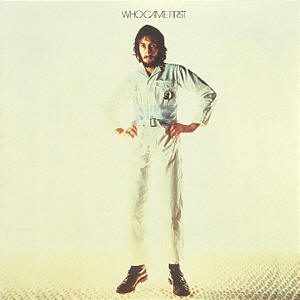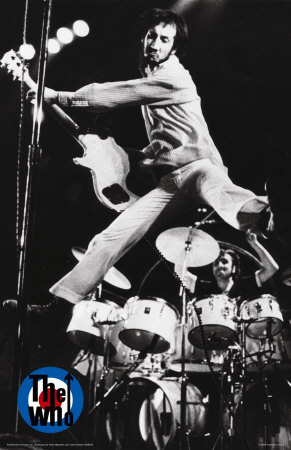
Pete Townshend As Depicted On The Cover Of His First Solo Record, "Who Came First" (1972)
Pete Townshend’s love for Indian Avatar Meher Baba produced the critically-acclaimed Tommy album in 1969, but there was more to it. As a “Baba Lover”, Townshend was involved with other devotees in the production and internal release of albums that included not only music but also poetry readings. Those were to fall into the hands of bootleggers and be repackaged before too long, and that was the reason Pete’s record company offered him the chance to assemble an official disc. That disc was to be named “Who Came First”, it was issued in 1972, and it was to be Pete’s first release outside of The Who.
As I explained in the general introduction to Pete’s music, “Who Came First” was not really a “solo” album as a literal host contributed to the record. Caleb Quaye, Ronnie Lane and Billy Nicholls lent their interpretative skills to three of the nine tracks that were featured on “Who Came First”, and the album also included a painting by Mike McInnerney (he who had illustrated “Tommy”). Lyrics were likewise composed by other Baba lovers, with both McInnerney’s wife and Maud Kelly having writing credits of their own.
Pete provided some Who demos, a few original numbers and an adaptation of Baba’s Universal Prayer (“Parvardigar”). He also tackled Jim Reeves’ “There’s An Heartache Following Me”, as it was one of Baba’s favorite Western songs. The other was “Begin The Beguine”, and Pete did also cover it on another of those tribute albums. It didn’t make it into “Who Came First”, though.
The Who demos included “Pure & Easy” and “Let’s See Action”. The inclusion of “Pure & Easy” was phenomenal if only because a Who version was not issued until the “Odds & Sods” album almost 5 years later. The song was the genesis of the whole “Lifehouse” project, and its omission on the “Who’s Next” disc has always been mourned. As Dave Marsh said, it wouldn’t have “saved” the album itself. Rather, it would have “perfected” it. Continue reading

